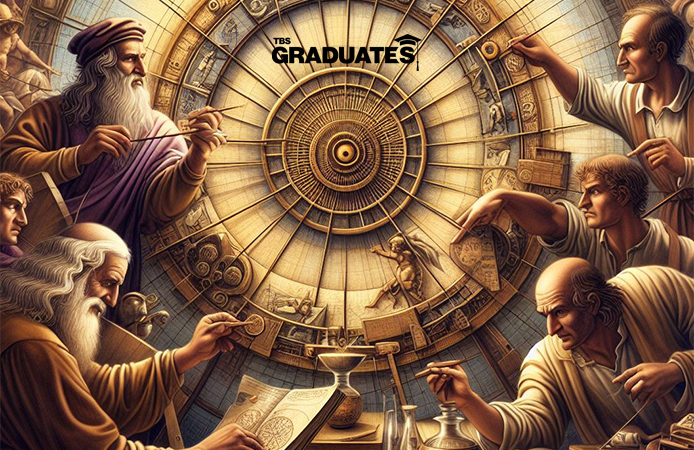Leonardo Da Vinci was one of the greatest minds the world has ever seen. His dominion of excellence was in arts as well as science. Born in the Renaissance period on this day (15 April), he was a true polymath who paved the way for the future. Like all great minds, Vinci was hundreds of years ahead of his time. Luckily for us, his notebooks and drawings can be studied by anyone who is interested. One could take valuable life lessons from these.
Here are five lessons from Leonardo Da Vinci that should keep students and young academicians going:
Study what you love: Leonardo Da Vinci loved to paint and he did his homework about his art. His interest in and study of the flight of birds is globally known. Even though he lacked much formal education, he invested a lot of time in studying in his fields of interest and took notes. He held a strong belief that studying without interest brings little to no result. “Just as food eaten without appetite is a tedious nourishment, so does study without zeal damage the memory by not assimilating what it absorbs.”, he wrote in his notebook and how right he is.
Laziness is vile: Was Leonardo born with an extraordinary mind? Absolutely. But did he become great without working for it? Nobody ever does. Leonardo Da Vinci had to struggle from his early days and earn every bit of his name. And he abhorred idleness. As we can see from another entry in his notebook- “Iron rusts from disuse; stagnant water loses its purity and in cold weather becomes frozen; even so does inaction sap the vigour of the mind.”
Keep an open but strong mind: As easy as it sounds, keeping an open yet strong mind is more difficult than one would imagine. It was even more challenging during Leonardo’s time. Back in those days, everyone still believed that the earth was the centre of the world and it was the sun that moved around. But after a few experiments and observations of his own, Leonardo wrote in his notebook that “The sun does not move”. It sounds like a small incident but back then such thoughts and ideas were as good as blasphemy. To keep a mind, open enough to change your beliefs based on facts is a very difficult thing to do and this is something scholars can learn from Leonardo.
Copying is a process of learning: While many modern artists hold a strong stance against copying other’s work, Leonardo Da Vinci saw it as an opportunity to learn. “He who can copy can do”, is one of his most famous sayings. Besides, he encouraged copying from great artists to learn all the better. In his own words, “The artist ought first to exercise his hand by copying drawings from the hand of a good master”, in other words, it’s okay to learn by watching others as long as it improves yourself. However, it should be noted that copying someone’s work is not to be confused with stealing. Copying is a sign of respect while stealing someone’s work without giving them proper credit is despicable.
Avoid empty fame: The strive for fame is an old tendency of people that has been around for hundreds of years, yet in this modern era where social media has made it easier to gather fame, Leonardo’s warning is more relevant than ever. “Nothing should be so greatly feared as empty fame,” wrote the great artist who was no stranger to fame himself. Yet he understood how fame can be dangerous when someone has not earned it. Talented people might suffer for a while but those who work with their passion will rise eventually. On the other hand, someone who only holds a facade of greatness with nothing to speak for him will surely fall. Even hundreds of years after his death, Leonardo’s genius still amazes us. Reading about him and learning how his mind worked can be great lessons for all those who strive for greatness.
